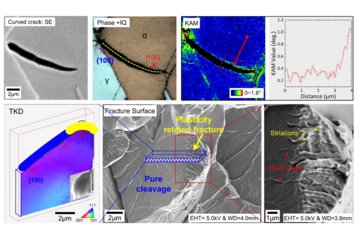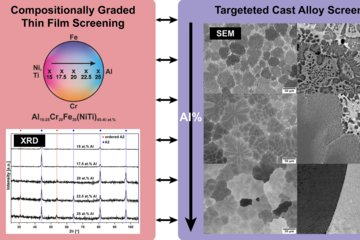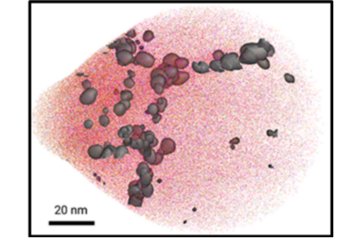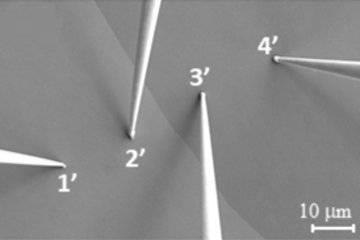All genres
81.
Journal Article
Macroscopic to nanoscopic in situ investigation on yielding mechanisms in ultrafine grained medium Mn steels: Role of the austenite-ferrite interface. Acta Materialia 178, pp. 10 - 25 (2019)
82.
Journal Article
Experimental and numerical study of mechanical properties of multi-phase medium-Mn TWIP-TRIP steel: Influences of strain rate and phase constituents. Acta Materialia 177, pp. 250 - 265 (2019)
83.
Journal Article
Invar effects in FeNiCo medium entropy alloys: From an Invar treasure map to alloy design. Intermetallics 111, 106520 (2019)
84.
Journal Article
Quantification of solute deuterium in titanium deuteride by atom probe tomography with both laser pulsing and high-voltage pulsing: influence of the surface electric field. New Journal of Physics 21, 053025 (2019)
85.
Journal Article
Strain hardening mechanisms during cold rolling of a high-Mn steel: Interplay between submicron defects and microtexture. Materials Science and Engineering A: Structural Materials Properties Microstructure and Processing 754, pp. 636 - 649 (2019)
86.
Journal Article
Effect of volume fraction and mechanical stability of austenite on ductility of medium Mn steel. Journal of Iron and Steel Research International 26, pp. 1209 - 1218 (2019)
87.
Journal Article
Thermodynamics of grain boundary segregation, interfacial spinodal and their relevance for nucleation during solid-solid phase transitions. Acta Materialia 168, pp. 109 - 120 (2019)
88.
Journal Article
Metastability alloy design. MRS Bulletin 44 (4), pp. 266 - 272 (2019)
89.
Journal Article
Atomic-scale investigation of hydrogen distribution in a Ti–Mo alloy. Scripta Materialia 162, pp. 321 - 325 (2019)
90.
Journal Article
Improving the ductility of ultrahigh-strength medium Mn steels via introducing pre-existed austenite acting as a “reservoir” for Mn atoms. Materials Science and Engineering A: Structural Materials Properties Microstructure and Processing 749, pp. 235 - 240 (2019)
91.
Journal Article
Multi-scale characterization of austenite reversion and martensite recovery in a cold-rolled medium-Mn steel. Acta Materialia 166, pp. 512 - 530 (2019)
92.
Journal Article
Strain partitioning and strain localization in medium manganese steels measured by in situ microscopic digital image correlation. Materialia 5, 100252 (2019)
93.
Journal Article
Martensite to austenite reversion in a high-Mn steel: Partitioning-dependent two-stage kinetics revealed by atom probe tomography, in-situ magnetic measurements and simulation. Acta Materialia 166, pp. 178 - 191 (2019)
94.
Journal Article
Ti and its alloys as examples of cryogenic focused ion beam milling of environmentally-sensitive materials. Nature Communications 10, 942 (2019)
95.
Journal Article
Ultrastrong Medium‐Entropy Single‐Phase Alloys Designed via Severe Lattice Distortion. Advanced Materials 31, 1807142 (2019)
96.
Journal Article
Deformation compatibility between nanotwinned and recrystallized grains enhances resistance to interface cracking in cyclic loaded stainless steel. Acta Materialia 165, pp. 87 - 98 (2019)
97.
Journal Article
Carbon and strain partitioning in a quenched and partitioned steel containing ferrite. Acta Materialia 165, pp. 561 - 576 (2019)
98.
Journal Article
Revealing fracture mechanisms of medium manganese steels with and without delta-ferrite. Acta Materialia 164, pp. 683 - 696 (2019)
99.
Journal Article
An Automated Computational Approach for Complete In-Plane Compositional Interface Analysis by Atom Probe Tomography. Microscopy and Microanalysis 25 (2), pp. 389 - 400 (2019)
100.
Journal Article
Phase nucleation through confined spinodal fluctuations at crystal defects evidenced in Fe–Mn alloys. Nature Communications 9 (1), 1137 (2018)











